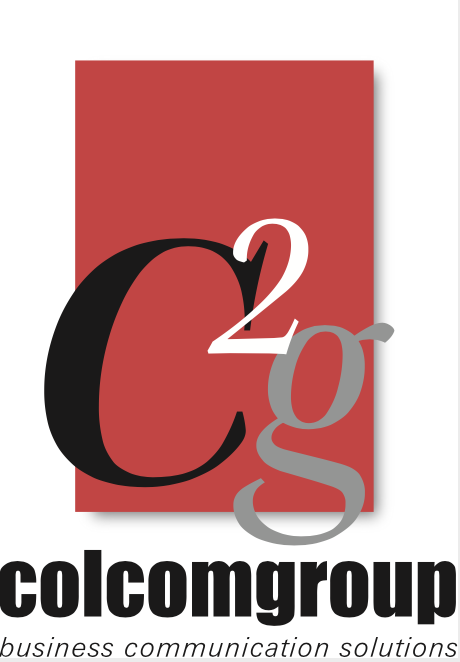
Human Capital Disclosure: Diversity Workplace Tool to Connect to a Thriving Capital Markets and Institutions For a Better Democracy
ORLANDO, FLORIDA / AGILITYPR.NEWS / April 13, 2023 /
CALL TO ACTION: Company/government human capital disclosures to the public/capital markets can serve as a critical measurement to better manage workplace/community diversity, equity and inclusion efforts/ productivity/ relevancy.. Without disclosure there is not opportunity to provide governance/ inclusion > positive human capital valuation.
STAT: +50% of a company's value to the capital markets consistts of the knowledge, skills, and health that people invest in and accumulate throughout their lives, enabling ALL EMPLOYEES OF THE USA to realize their full potential as productive members of our society. But yet today, most of the largest states of America are already minority-majority and minorities and under the age of 18 nationwide. By 2040, the United States of America will be a MINORITY-MAJORITY COUNTRY. In 2018, 93% of the people running the federal government limited to just one white race, and 80% of them were men. In the private sector, lawyers, accountants and doctors (top professionals in the USA) > only 2% of all U.S. Certified Public Accountants (CPAs) are Black. The percentage of African American lawyers has remained mostly stagnant for the past decade, accounting for only 5% of the legal profession; and only about 5.7% of physicians in the United States identify as Black or African American, according to the latest data from the Association of American Medical Colleges.
ANALOGY: "Equality is giving everyone the same pair of shoes. Equity is giving everyone a pair of shoes that fits. And when everyone has a pair of shoes that fit - then we can succeed, contribute back to society and help all others for a better country." #FREEDOM #LIBERTY #HAPPINESS #REPSPECT #DEMOCRACY. We need to better MEASURE TO MANAGE human capital to stay competitive and support DEMOCRACY over DICTATORSHIP (USA Leader of the Free World)
BACKGROUND
Crisis Today - Could Hitler's attack on Poland that triggered World War II be today's "brightline" /historic moment of humanity today regarding Putin's war against Ukraine as a "global battle" between democracy and authoritarianism or from an economic question -- between -- free enterprise or a command economy in which a central governmental authorities like Cuba, North Korea, Russia dictate the levels of production that are permissible and the prices that may be charged for goods and services to the public as a global model for the rest of the world via a new World War III in operation?
What we see before us today- The people of Ukrainian are defending freedom and democracy with strong connections to the EU and the importance of free enterprise. The European Union describes its values as being 'Human Dignity, Freedom, Democracy, Equality, Rule of Law, and Human Rights'. Democracy is a cornerstone of the project that is the European Union, and has been since its inception built on the concept of free enterprise and the relevance of efficient, open, transparent and accountable capital markets. It thus also represents a criteria for accession to the EU like Finland, Sweden and the Baltic States. The United States supports the EU and the importance of the protection of NATO and the importance of democracy, free enterprise equality, human rights, private property, free choice, and religious freedom where free peoples of the world support democracy.
Question: Given the evidence that innovation, business success and diversity are intrinsically linked to free enterprise, it’s no surprise that diversity, equity and inclusion (DEI) has been a huge focus on the importance of a thriving, open capital markets supported by government institutions linked to support of democracy over authoritarianism supported by "command economy for the people." Or more directly -- how relevant is the capital markets linked directly to the importance of diverse, inclusive and equitable human capital value creation via the tool of human capital disclosure metrics that are transparent, accountable and verified?
What we know today is that a government representative of its people is better run, more meritocratic, and helps achieve equity - freedom of choice built on participation in the capital markets. It creates and implements more inclusive policies and elevates a diverse set of role models. Leaders from diverse backgrounds often develop more creative insights, proffer alternative and comprehensive solutions and thus make better decisions that better serve the American people.
And what we know is that diversity and inclusion have a significant impact on people, businesses and wider society THROUGH INCLUSION/ PARTICIPATION/ REPRESENTATION. An inclusive environment helps individuals from all demographics and backgrounds to feel psychologically safe, respected and valued for who they are in support of a relevant capital markets built on the foundation of democracy/ representation.
Demographic shifts in America and Importance of Inclusion
By 2040, the United States of America will be a minority-majority country. Yet, in 2018, 93% of the people running the federal government limited to one race, and 80% of them were men. The current make-up of our government does not reflect the nation’s current or growing diversity, and also fails to fulfill our founding fathers’ constitutional promise of a nation that is “of the people, by the people, and for the people” BUT efforts are underway for more effective inclusive capital markets to help expedite better transparent, accountable and machine-readable human capital disclosure that demonstrate alignment to representation and the communities people serve.
Numerous studies (Like McKinsey) have shown that inclusive workplaces significantly outperform well-managed, homogeneous workplaces over time. Individuals are more committed, innovative, loyal, but most importantly, are more comfortable sharing their ideas and perspectives. Diversity is a strength and when these differences are embraced, can encourage better results.
McKinsey & Company – Our latest report shows not only that the business case remains robust but also that the relationship between diversity on executive teams and the likelihood of financial outperformance has strengthened over time. These findings emerge from our largest data set so far, encompassing 15 countries and more than 1,000 large companies. By incorporating a “social listening” analysis of employee sentiment in online reviews, the report also provides new insights into how inclusion matters. It shows that companies should pay much greater attention to inclusion, even when they are relatively diverse.
McKinsey Stats include more than $12 trillion in additional GDP if gender gap is narrowed by 2025 or $2 billion in potential revenue if financial inclusion efforts broaden services for black Americans; or 160 million women may need to change jobs through 2030 due to automation.
The Center for American Progress stats - "A bevy of literature has proven that LGB individuals in states with employment nondiscrimination laws experience higher rates of employment and better wages than in states without. 14 One 2020 study found that anti-discrimination laws reduce the gay male labor force participation gap by 18 percent, the employment gap by 17 percent, and the wage gap by 11 percent.15
Why Human Capital Management is so Critical to the Capital Markets?
According to PwC - With up to 85% of a company’s costs tied up in people (pwc.com), stakeholders looking to allocate investment dollars want to understand how management sees the company’s strategic and operational requirements.
According to Brand Finance – Global intangible value has surpassed US$50 trillion for the first time in history, reaching US$57.3 trillion at the beginning of the current financial year (2018), according to the latest Brand Finance Global Intangible Finance Tracker (GIFT™). This constitutes 52% of the overall enterprise value of all publicly traded companies worldwide, which now amounts to an equally record-breaking US$109.3 trillion, exceeding the US$100 trillion mark also for the first time.
Is human capital the most important asset for a company?
One of the most important intangible assets that doesn't appear directly on the balance sheet is human capital. The definition of human capital is the economic value that a person, or group of people, brings to an organization based on their training, skills, loyalty, motivation, and well-being. But it’s clear that these have value for any company.
What is the importance of human capital in the company?
Human capital is perceived to increase productivity and thus profitability. The more investment a company makes in its employees, the chances of its productivity and success become higher.
What are the key pillars of human capital generally reviewed?
Topics of disclosure can be largely grouped into four categories. These include hiring and retaining talent; diversity, equity and inclusion; employee engagement; and COVID-19, health and safety.
My focus is on DEI and DEI metric disclosure for better connect to the capital markets for inclusion/ opportunity/ healthcare/ democracy.
Why should human capital be included in disclosures to the capital markets for impact investment to support better diversity/ better transparency/ better accountability to measure and manage?
In the investing world, corporations issue disclosures to provide investors and investment analysts with FINANCIAL information that could influence an investor's decision whether to buy a company's stock or bonds. The primary advantage of a publicly traded company is that it can tap into the market by selling more shares. The FINANCIAL disclosure statement can reveal negative or positive news and financial information about the company. Consequently, more and more of the largest public companies and the regulators overseeing public company oversight understand the importance of human capital value creation and its relevance to capital formation and support of the public interest.
QUESTION: In the United States and the EU and the free people of democratic countries -- do we have a major mismatch without a regulated process like financial disclosures that could be applied to human capital disclosures to better connect to the capital markets as we face the question of free enterprise/ democracy or command economies of countries like Russia?
Where do we stand in the United States related to US public company human capital disclosures and direct connection to the bulk of the capital markets?
According to PwC: The US Securities and Exchange Commission (US SEC) introduced new disclosure requirements in August 2020 designed to provide stakeholders insight into human capital. The 2020 rules require disclosure of human capital objectives or measures used to manage the business if material to an understanding of the business. In certain SEC filings, a public company is now required to disclose:
• the number of employees and a description of its human capital resources, if material to the business as a whole; and if material to a particular segment, that segment should be identified
• any human capital measures or objectives, if material, that the registrant focuses on in managing its business, such as those related to the development, attraction, safety, engagement, and retention of employees.
CONTINUED BELOW TO PAGE 2
Page 2 Continued
The disclosures may help stakeholders evaluate whether a business has the right workforce to meet immediate and emerging business challenges and the nature and magnitude of the related investments.
The US SEC current rules do not include a definition of “human capital” or a list of required measures to disclose.
What are investors seeing now since the US SEC instituted it’s 2020 Public Company Human Capital Disclosure?
From the Harvard Law Forum on Corporate Governance from the key themes of human capital management disclosure from Aon research of 103 10-K filings from S&P 500 companies, April 2021 through March 2022 (See attached charts/images) on results
“Put simply, investors, proxy advisors and employees want to see more detailed and quantitative human capital management disclosures.”
In a recent EY report - Workforce diversity — Half of Fortune 100 companies highlighted commitments and efforts to enhance diversity and inclusion. Key themes of these disclosures included initiatives to empower women and minorities and bring them into leadership positions, diversity statistics and recruitment goals around diverse talent, employee affinity groups, supplier diversity initiatives, collaborations with diversity organizations, and external rewards and recognition.
Just under a third of the companies that discussed workforce diversity provided some measure of workforce diversity data (e.g., percentage of women and/or people of color across the global or US workforce, at the management level, in leadership positions or across incoming hires).
What’s Next? Will the US SEC issue a new human capital disclosure rule to define “human capital” and its relevance to investors with disclosed detailed DE&I metrics that could also include LGBTQIA, veterans and disabled?
Without a human capital definition from the US SEC, how relevant will public company disclosures be authored by management’s interpretation if it is not representative of those employees in the marketplace?
US SEC Chair Gary Gensler has been quoted in June 2021 as “This builds on past agency work and could include a number of metrics, such as workforce turnover, skills and development training, compensation, benefits, workforce demographics including diversity, and health and safety,” Gensler said. “Disclosure helps companies raise money. It helps the efficient allocation of capital across the market. And it helps investors place their money in the companies that fit their investing needs.”
In 2023, Pensions and Investments – The Securities and Exchange Commission will remain busy in 2023, introducing new rule proposals aimed at strengthening markets and finalizing a lengthy list of existing proposals unveiled in recent years, according to its updated regulatory agenda.
"I support this agenda as it reflects the need to modernize our rule set, moving deliberately to update our rules in light of ever-changing technologies and business models in the securities markets," SEC Chairman Gary Gensler said in a statement. "Our ability to meet our mission depends on having an up-to-date rulebook — consistent with our mandate from Congress, guided by economic analysis and shaped by public input."
The proposed rules include enhanced disclosures for companies regarding human capital management and corporate board diversity, respectively; changes to registered investment companies' fees and fee disclosure; and added rules to address the "cybersecurity and resiliency of certain commission registrants."
In June 2022, The Working Group on Human Capital Accounting Disclosure submitted a petition pursuant to Rule 192(a) of the Securities Exchange Commission Rules of Practice that asked that the US SEC develop rules to require public companies to disclose sufficient information to allow investors to assess the extent to which firms invest in their workforce.
One of the considerations included increased importance of intangible assets to the value of U.S. public companies. In 1975, two years after the SEC adopted disclosure rules in Regulation S-K requiring companies to report on the total number of employees, intangibles represented 17% of the value of the S&P 500.6 By 2020, when the SEC adopted reforms to modernize Regulation S-K and require disclosure of human capital resources, intangibles represented 90% of the S&P 500 market value. 7 (Id. This study suggests that intangibles are especially important for U.S. firms; among the other indices examined by Ocean Tomo, the S&P Europe 350 had the highest share of intangible market value, coming in at 75%.)
Most companies discussed DEI in their human capital management disclosure.
Again from the Harvard Law Forum on Corporate Governance “Eighty percent discussed specific DEI initiatives, such as unconscious bias training, diverse candidate recruitment and employee resource groups. We also saw an increase in quantitative DEI disclosures compared to the prior year. Just over half of companies disclosed both gender and race/ethnicity breakdowns of their workforce. In addition, 41 percent of companies overlay these quantitative diversity metrics with job type, career levels and other categories, presenting a more in-depth look at their workforce diversity.
As mentioned, we did see a decline in disclosure of pay equity studies from the prior year, but about a quarter of companies still mentioned conducting gender and race/ethnicity pay equity studies, and 40 percent of those included quantitative data. Examples of this include the percentage of pay disparity and cents on the dollar earned by women or people of color compared to men or non-minority employees.
But Just Capital wrote this overview – “what we know is there is major emphasis on cybersecurity security and protection disclosures and possibly climate-related disclosures only 15% of public companies in the United States disclose wage data, health benefits, worker retention and training initiatives.”
We are just starting to really look closely at human capital disclosures from company management, to investors, to regulators, to connected communities to the American public but WE HAVE A LOT TO DO to connect a more perfect capital markets/democracy through transparent and accountable disclosures for better impact investing/ new diverse jobs/opportunities.
But also note -- retail investors now make up an estimated 23% of US equity trading volume, which represents more than a two-fold increase since 2010. Increased access to markets is a positive development, but it is not without risk to investors. It raises important questions about the importance of transparency and accountability in that -- privately traded companies/ private equity does not necessarily need to answer to any stockholders, and there is no need for disclosures – like human capital metrics to the capital markets. Starting with public companies for human capital disclosure and moving to privately traded companies could be a first start as a tool to connect to the capital markets BUT we must not forget this growing area of capital formation in the private equity space that must also include human capital disclosure to connect to the capital markets.
Status of Board Diversity by NASDAQ List-Companies on the Stock Exchange
Nasdaq’s Board Diversity Rule may be the greatest impact so far on diversity disclosure in the United States issued on February 28, 2023. The new rule requires disclosure of the number of directors self-identified with each specified demographic group and the number self-identified with each gender and as LGBTQ+. Subsequent deadlines impose a minimum number of directors from underrepresented groups on a comply-or-explain basis.
In addition to human capital disclosures the SEC also plans to introduce a proposed rule on board diversity disclosure later this year. A number of states, including Illinois, already require board diversity reporting for public companies with headquarters in their jurisdictions. The Russell 3000 Board Diversity Disclosure Initiative, representing 26 investor organizations, also has sent letters to companies since 2020 encouraging disclosure of the race/ethnicity and gender of individual directors.
Efforts to Expand LGBTQIA Board Membership and the “Tone on the Top”
Out Leadership reported recently that “Few, if any, Fortune 500 boards ask for LGBTQ+ metrics in their annual Director & Officer Questionnaire, and less than 0.4% of directors in the Fortune.” Out Leadership is working to harness the power of business to advocate for equality. Out Leadership is supporting programs, tools, thought leadership and advocacy have helped almost 100 of the world's greatest companies understand how LGBTQ+ equality can drive business performance.
What Could be the Possible DEI Human Capital Metrics Framework Disclosed in a New Proposed US SEC Human Capital Metric Report?
I’ve written an article in IMA’s Strategic Finance Magazine in September 2021 outlining an opportunity for a possible human capital disclosure framework that may be soon mandated by the U.S. Securities & Exchange Commission (SEC) that could also include LGBTQIA, disabled and veterans in corporate disclosure metrics but there is much to do to move forward.
Currently the In the United States, Title VII of the Civil Rights Act of 1964 requires employers to report human capital data to the EEOC. The EEO-1 REPORT requires U.S. companies with more than 100 employees and federal government contractors with fewer than 50 employees to submit race, ethnicity, and gender data across 10 job categories from their organization to the federal government annually. Could public companies and private companies forward with inclusion and also include LGBTQ+, disabled, and veteran employees in the EEO-1 report? Many public companies regardless of the current US SEC human Capital Rule from 2020 are already disclosing to the public it’s EEO-1 report made public.
NOTE: Roughly estimated +100 million Americans that represent disabled, veterans and LGBTQIA employees in the marketplace are not identified in categories contained in the human capital disclosure EEOC EEO-1 Report. Please see below efforts to create a safe culture to support voluntary self-identification of disabled, veterans and LGBTQIA workers.
What Could Be a Global DEI Metrics for a Possible Public Company Global Human Capital Disclosure Metrics Used by Investors Worldwide?
Effective on August 1, 2022, the Value Reporting Foundation consolidated into the IFRS Foundation. At that time, stewardship of the Sustainability Accounting Standards Board (SASB) Standards—including all active projects—passed from the SASB Standards Board to the new International Sustainability Standards Board (ISSB) based in Frankfurt, Germany. The new ISSB has committed to building on the SASB Standards and progressing ongoing SASB projects for global use. Any future updates to the SASB Standards resulting from this project will be subject to ISSB due process prior to being finalized.
- The Sustainability Accounting Standards Board Preliminary Framework on Human Capital Disclosure (December 2020) PAGE 80 which is a NOW part of the International Sustainability Standards Board suggested: “Given this reporting challenge, a likely path forward is first relying on existing, widely-used measures, such as the U.S. [EEOC] EEO-1 survey, as a foundation for gender and racial and ethnic disclosure in the near-term as research on diversity and inclusion progresses and regulations emerge” and “For regions of the world where greater emphasis is placed on racial and ethnic diversity, it is reasonable for entities to report to existing standardized regulatory requirements, such as the U.S. [EEOC’s] EEO-1 survey.” The ISSB has additional updates on human capital disclosure update.
Continue to Page 3 below
PAGE 3
In Q2, the ISSB will consult on priorities beyond these initial Standards in early 2023. Based on feedback from investors and other market participants, the ISSB will seek further feedback on four projects in its upcoming consultation on agenda priorities:
- biodiversity, ecosystems and ecosystem services;
- human capital;
- human rights; and
- connectivity in reporting (a potential joint project with the IASB).
The ISSB also has international political support: its work to develop the Sustainability Disclosure Standards is backed by the G7, the G20, the International Organization of Securities Commissions (IOSCO), the Financial Stability Board, African Finance Ministers and Finance Ministers and Central Bank Governors from more than 40 jurisdictions.
The ISSB is responsible for developing IFRS Sustainability Disclosure Standards, to provide a truly global baseline of sustainability disclosures to further inform economic and investment decisions aimed at broader stakeholders. This collaboration aims to ensure compatibility and interconnectedness between the ISSB’s investor-focused baseline sustainability information designed to meet the needs of the capital markets.
The new ISSB will help reduce the reporting burden for companies and further harmonise the sustainability reporting landscape at an international level which includes used of machine-readable data analytics for instant analysis/transparency
Meanwhile - What’s Happening in the US Federal Workplace for LGBTQIA employees for voluntary self-identification in the workplace?
As I mentioned in the little-known report called the U.S. Equal Employment Opportunity Commission (EEOC) EEO-1 Component 1 data used in the private sector as a possible human capital disclosure framework that may be soon mandated by the U.S. Securities & Exchange Commission (SEC) on the US federal government side (largest employer in the country) – The White House in January 2023 -- released two reports required by the June 2022 Executive Order 14075 on Advancing Equality for Lesbian, Gay, Bisexual, Transgender, Queer, and Intersex (LGBTQI+) Individuals: the Federal Evidence Agenda on LGBTQI+ Equity from the Office of Science and Technology Policy and Recommendations on the Best Practices for the Collection of Sexual Orientation and Gender Identity Data on Federal Statistical Surveys from the Office of Management and Budget.
What about the private sector and LGBTQIA employees for voluntary self-identification in the workplace?
As the US Securities & Exchange Commission moves to a mandate a human capital disclosure framework for the capital markets – In the U.S., 4.5% of the population identifies as lesbian, gay, bisexual, or transgender1 —an estimated 11 million LGBT people—and 88% are employed. More than ever workers also need to be included in the US EEOC EEO-1 REPORT to also include LGBTQIA employees in the workplace in disclosures in the current "gold standard" for human capital disclosure in the United States and possibly global capital markets standard setters (see below).
According to S&P Global - AGAIN -- Less than 2% of companies assessed through the CSA 2021 publicly report the number of employees who identify as LGBTQI+. More data collection would help measure LGBTQ+ inclusion in the workplace.
If companies truly want to move forward with transparent, accountability -- diversity, equity and inclusion for all minorities in the United States -- LGBTQIA must be included or there is no diversity - especially because of the importance intersectionality for LGBTQIA and LGBTQIA of Color offers to America. LGBTQ+ employees are the universal bridge that links to all of demographics. The "Rainbow of America" and the importance of supporting INTERSECTIONALITY.
As the nation’s largest employer – the US Federal Government – just like the private sector using US EEOC EEO-1 report – needs to create protocols in place in the collection and protection therein for key human capital metrics – including LGBTQIA employees in the federal workforce.
Within this report Recommendations on the Best Practices for the Collection of Sexual Orientation and Gender Identity Data on Federal Statistical Surveys from the Office of Management and Budget are the following critical elements needed for LGBTQIA employee data information.
As it relates to guidelines collecting LGBTQIA, Disabled and Veteran SOGI Data on company forms and other administrative contexts:
- Ensure relevant data is collected and privacy protections are properly applied (Safe and Secure for candidate self-voluntary identification)
- Prevent adverse legal actions against using the data against intent
- Make responses voluntary
- Rely on self-attestation
- Be consistent and intentional
- Significance of Mentors and Allies embedded within companies
The US Department of Labor Office of Federal Contract Compliance Programs (OFCCP) enforces regulations that prohibit discrimination based on sexual orientation and gender identity, under Executive Order 11246, as amended.
But note, The Biden administration has issued recommendations to agencies on collecting self-reported statistics on sexual orientation and gender identity under a 2022 executive order.
The document from the Office of the Chief Statistician of the United States lists considerations for including such items on surveys, collecting and reporting the information, and safeguarding the data.
It however does not address the collection of such data “as part of administrative transactions, for example, by way of forms required to apply for a job, benefits, or services. These administrative collections have different quality, privacy, legal, and ethical concerns that are outside the scope of this document.”
“This report does not mandate any particular approach or create any new requirements for agencies. In the future, federal agencies may need to diverge from the recommendations in this report to reflect new, evidence-based best practices” via the report. But it is an effort to begin to provide recommendations on
What are public companies doing to collect LGBTQIA voluntary self-identification in the marketplace?
University of Massachusetts Amherst Center of Employment Equality – “IBM was also one of the first companies to adopt voluntary “self-ID” for its employees and now allows them to choose the pronouns they use, making it an interesting model for other firms to study. IBM makes it possible for employees in 40 countries (covering 87% of the IBM workforce) to provide their own self-identified sexual orientation and gender identity on their IBM human resources record. This declaration is voluntary, and employees can remove it at any time.”
UNMass stated that, “Collecting data on employees’ sexual orientation and gender identity, or “self-ID”, has benefits for LGBT+ employees and employers. On a practical level, self-ID makes visible the diversity of an employer’s workforce with respect to people whose difference may be otherwise invisible. Not every LGBT+ person will be completely open about their identities in the workplace, so confidential surveys or other methods of counting LGBT+ people are tools employers can use to promote nondiscrimination and equal opportunities. On a symbolic level, self-ID shows that an employer recognizes and values SOGI diversity, putting LGBT+ inclusion on a par with racial, gender, and other identities that employers collect data on. The Human Rights Campaign reports that 42% of the eight hundred-plus firms they survey for the Corporate Equality Index now allow some form of self-ID on human resources records.3
Key is protecting LGBTQIA human capital data via voluntary self-identification for public companies to also include in corporate human capital disclosures to connect to the capital markets.
For the Federal Government on Voluntary Self Identification of Sexual Orientation and Gender Identity (SOGI) Protocols for Protection
Recommendations on the Best Practices for the Collection of Sexual Orientation and Gender Identity Data on Federal Statistical Surveys from the Office of Management and Budget – “…Agencies are encouraged to consider additional protections above and beyond those offered here to the extent to which they seek to balance the need for collecting (SOGI) data with minimizing the risks of harm to LGBTQI+ individuals seeking access to benefits, services, funding opportunities, and/or employment from the Federal Government.
However, as heard consistently in our listening sessions and in responses to the request for information (RFI), these data can and should be collected under many circumstances to advance equity. Thus, agencies should have a goal of moving towards appropriate ways to safely collect, store, use, report, and share sexual orientation and gender identity data to facilitate equity analyses. Finally, these guidelines should be reviewed routinely as sexual orientation and gender identity data collections are expanded as additional considerations may emerge during the implementation and evaluation of SOGI data collections.”
Back to IBM and the importance of Voluntary self-identification of LGBTQIA in the workplace and importance to democracy/ capital markets
UNMass: “When it rolled out in 2006, IBM’s self-ID program was one of the first in the world. Why did IBM decide to innovate, given the absence of legal requirements or examples from other employers? The data collected for this report suggest that one key reason was that LGBT+ employees wanted the company to recognize them in the same way as other demographic groups tracked by the company. Those employees also saw practical value in IBM’s being able to communicate directly with LGBT+ employees. The resulting self-ID practice was also shaped by the company’s perception of the value of self-ID for employees and for the company. Other important factors affecting the decision and the program design included concerns about legal issues, particularly related to privacy laws related to data, to the potential for the data to be used to discriminate, and for the safety of employees in countries with laws that criminalize or harm LGBT+ people.”
Where are we in the United States in the workplace with LGBTQIA?
The Human Rights Campaign Foundation’s 2022 Corporate Equality Index Survey that looked at 1,271 companies that participated and disclosed:
- Sexual Orientation in U.S. Nondiscrimination Policy
- Gender Identity in U.S. Nondiscrimination Policy
- Domestic Partner Benefits
- Transgender-Inclusive Benefits
- Organizational LGBTQ Competency
- Public Commitment to the LGBTQ Community
Data from the HRC CEI tells the story of nearly two decades of year over year growth in the adoption of these critical policies and practices indicative of employers' commitment to equality.
In another study, a recent survey found that 93% of Fortune 500 companies include sexual orientation in their nondiscrimination policies, and 85% include gender identity.1
The UCLA School of Law Williams Institute using survey data collected in May 2021 examined the lifetime, five-year, and past-year experiences of discrimination among LGBT employees. It is one of the first studies to look at LGBT employment discrimination during the COVID-19 pandemic and in the year following Bostock v. Clayton County.
IMPORTANT NOTE TO THINK ABOUT: Bostock v. Clayton County, 590 U.S. ___ (2020), is a landmark United States Supreme Court civil rights case in which the Court held that Title VII of the Civil Rights Act of 1964 protects employees against discrimination because they are gay or transgender. Intersectionality of Race connected over to the civil rights of LGBTQIA and LGBTQIA of Color - Again in 2020 -- US Extend 1964 Civil Rights Act over to LGBTQIA+ Americans under US LAW and this is a major American milestone - equal justice under law that also includes the workplace.
See continued to Page 4 below
PAGE 4
Again UCLA survey - over +8 million workers in the U.S. identify as LGBT.1 Employment discrimination and harassment against LGBT people has been documented in a variety of sources and found to negatively impact employees’ health and wellbeing and to reduce job commitment and satisfaction.
- The survey revealed that 50% of LGBTQ workers in the U.S. have not come out to their supervisor and 26% are not out to any co-workers.
- Nearly half of LGBT workers have experienced unfair treatment at work at some point in their lives.
- LGBT employees of color were more likely to report being denied jobs and verbal harassment.
- Many LGBT employees reported engaging in “covering” behaviors to avoid harassment or discrimination at work.
- LGBT employees of color reported more recent experiences of discrimination (not hired or fired) than white LGBT employees. Thirty-seven percent of LGBT employees of color reported experiencing some form of employment discrimination (being fired or not hired) within the past five years compared to 25.3% of white LGBT employees
EU Discrimination in Employment
Following the inclusion in the Treaties of the above-mentioned provisions, Directive 2000/78/EC "Directive establishing a general framework for equal treatment in employment and occupation" was enacted in 2000. This framework directive compels all EU states to adopt anti-discrimination legislation in employment. That legislation has to include provisions to protect people from discrimination on the basis of sexual orientation.[2]
In practice, this protects EU citizens from being refused a job, or from being fired, because of their sexual orientation. It also protects them from being harassed by a colleague due to their sexual orientation.
Russia Discrimination in Employment
In a recommendation of 16 September 2021, EU Parliament considered that the LGBTI+ community in various parts of the Russian Federation faces extensive discrimination, including harassment, torture, imprisonment and killings.
In 27 October 2022, the State Duma unanimously passed a proposed bill that expands the gay propaganda law to cover any age group, instead of only minors. The bill also adds materials that give minors a "desire to change their sex", or constitute the promotion of "paedophilia", to the categories of materials covered by the law.[116][117][118] The bill was unanimously passed by the Federation Council on 2 December 2022 and signed into law by Putin on 5 December 2022.[119]
Treating LGBT+ people in their participation in work has a direct effect of discrimination in employment on a person’s right to work, discrimination in employment can prevent people from accessing opportunities and benefits, such as parental leave, health care and insurance, which they are entitled to under their right to work.
The Treaty on European Union, in its last version as updated by the Treaty of Lisbon in 2007 and in force as of 2009, makes the Charter of Fundamental Rights of the European Union legally binding for the member state of the European Union and the European Union itself. In turn, Article 21 of the Charter of Fundamental Rights of the European Union includes an anti-discrimination provision that states that "any discrimination based on any ground such as [...] sexual orientation shall be prohibited."[1][2][3]
Furthermore, the Treaty on the Functioning of the European Union provides in Articles 10 that the European Union has a positive duty to combat discrimination (among other things) on the grounds of sexual orientation and provides in Article 19 ways for the Council and the European Parliament to actively propose pass legislation to do so. These provisions were enacted by the Treaty of Amsterdam in 1999.[1][2]
United States Discrimination in Employment
Lesbian, gay, bisexual and transgender (LGBT) rights in the United States rank among the highest in the world,[1][2] with public opinion and jurisprudence changing significantly since the late 1980s;[3][4] by the early 2020s, an overwhelming majority of Americans approved of the legality of same-sex marriages.[5]
There is no federal statute explicitly addressing employment discrimination based on sexual orientation or gender identity. AGAIN, in June 2020, the U.S. Supreme Court ruled that sexual orientation and gender identity are included under "sex" as a prohibited ground of employment discrimination in the Civil Rights Act of 1964.[54] This effectively means that in the U.S., no employer can fire an employee on the basis of sexual orientation or gender identity.
Twenty-four states, the District of Columbia, Puerto Rico, Guam, and over 140 cities and counties have enacted bans on discrimination based on sexual orientation and/or sexual identity. Additionally, some states have laws or regulations that ban discrimination based on gender identity and/or sexual orientation in public employment only.
As of June 15, 2020, all persons working for employers that employ more than 15 people are protected from discrimination based solely on the grounds of sexual orientation or gender identity via the Supreme Court's landmark decision in Bostock v. Clayton County.[66] Two-thirds of registered U.S. voters agree with the Supreme Court's decision that employment nondiscrimination laws should protect LGBT identity, according to a HuffPost/YouGov poll conducted several days later.[67]
Hopefully as both the US SEC and ISSB consider human capital disclosure metrics this data should also include LGBTQIA, disability and veterans available to the public/investors to better connect to the capital markets to support inclusion/ impact investing for better diversity, equity and inclusion in upcoming proposed rules for review.
Where do we Stand in the United States/ World Regarding LGBTQIA and Employment?
Unfortunately, this is an unprecedented number of anti-LGBTQ bills continue to be proposed in state legislatures across the US. Elsewhere, nearly 70 countries continue to criminalize being LGBTQ, according to the Council for Foreign Relations, including 12 countries where consensual same-sex relations can mean the death penalty.
Estimated LGBTQIA Population in the United States
A 2021 Gallup poll found that 7.1% of the US identifies as lesbian, gay, bisexual or transgender – double the percentage in 2012 when Gallup started measuring the community. Perhaps even more importantly, one in five Gen Z members (21%) now identify as lesbian, gay, bisexual, or transgender and this percentage has nearly doubled in just 5 years.
LGBT WORKERS OF COLOR ARE AMONG THE MOST DISADVANTAGED IN THE AMERICAN WORKFORCE
About one-third of LGBT people are people of color. In a 2012 Gallup poll, one in three LGBT respondents (33%) identified themselves as people of color, compared to 27% of non-LGBT respondents. In all, there are an estimated 5.4 million LGBT workers in the United States, of which 1.8 million are people of color. Again - the US Supreme Court's landmark decision in Bostock v. Clayton County.[66] extending 1964 civil rights from hard fight civil rights efforts by people of color over to LGBTQIA and more importantly -- LGBTQIA needs more than ever to SUPPORT LGBTQIA people of color and our community (Importance of Intersectionality!).
Global Crisis
The LGBTQ+ community faces continued discrimination. 71 countries still criminalize LGBTQ+ acts. LGBT youth are particularly at risk, being twice as likely as non-LGBT youth to being verbally harassed at school and disproportionately impacted by homelessness and self-harm, as shown in a U.S. youth survey.
Most at risk youth in America today and importance of DEI workplace to better support families
The overall objective in helping families learn to support their LGBTQIA children and one of the main opportunities to helping LGBTQIA youth at risk is through a safe workplace culture/ DE&I efforts to better connect parents, families, and caregivers “where they are,” to build an alliance to support their LGBTQIA at youth at risk and EXTEND healthcare to LGBTQIA children and youth through the workplace of employees. The stats below are staggering and as a nation and DEI workplace efforts can help end serious health concerns and inhibit their child’s development and wellbeing through diversity, inclusion and equity in the workplace. This includes role models, allys, mentors, champions to inspire and help others/ give back. (Ryan & Diaz, 2011; Ryan & Chen-Hayes, 2013).
LGBTQIA Youth Most at Risk in America Today:
The Trevor Project’s 2022 National Survey on LGBTQ Youth Mental Health demonstrates that rates of suicidal thoughts have trended upward among LGBTQ young people over the last three years, making our life-saving work all the more important.
- 73% of LGBTQ youth reported that they have experienced discrimination based on their sexual orientation or gender identity at least once in their lifetime.
- 71% of transgender and nonbinary youth reported that they have experienced discrimination based on their gender identity.
- 45% of LGBTQ youth seriously considered attempting suicide in the past year.
- 73% of LGBTQ youth reported experiencing symptoms of anxiety
- 58% of LGBTQ youth reported experiencing symptoms of depression
- 93% of transgender and nonbinary youth said that they have worried about transgender people being denied access to gender-affirming medical care due to state or local laws.
- 36% of LGBTQ youth reported that they have been physically threatened or harmed due to either their sexual orientation or gender identity.
Conclusion
According to the US Chamber of Commerce - "We hear every day from our member companies—of every size and industry, across nearly every state—they’re facing unprecedented challenges trying to find enough workers to fill open jobs. Right now, the latest data shows that we have over 10 million job openings in the U.S.—but only 5.7 million unemployed workers."
Creating a safe workplace culture couple help efforts through enhanced human capital disclosures
to attract diverse workers as well as retained diverse employees.
Research shows that diversity in workplace promotes innovation, improves the bottom line, and even helps with recruitment and retain employees across the board. Support of the LGBTQIA in "safe workplace culture" clearly aligns to the "American Dream" -- in the belief that ALL people can obtain their own self identify of success in the pursuit of "life. liberty and freedom" and the possibility of helping other human being in a democracy based on equal justice under law.
CONTINUE TO PAGE 5 (HISTORY OF LGBTQIA AND RELEVANCE TO HUMANITY)
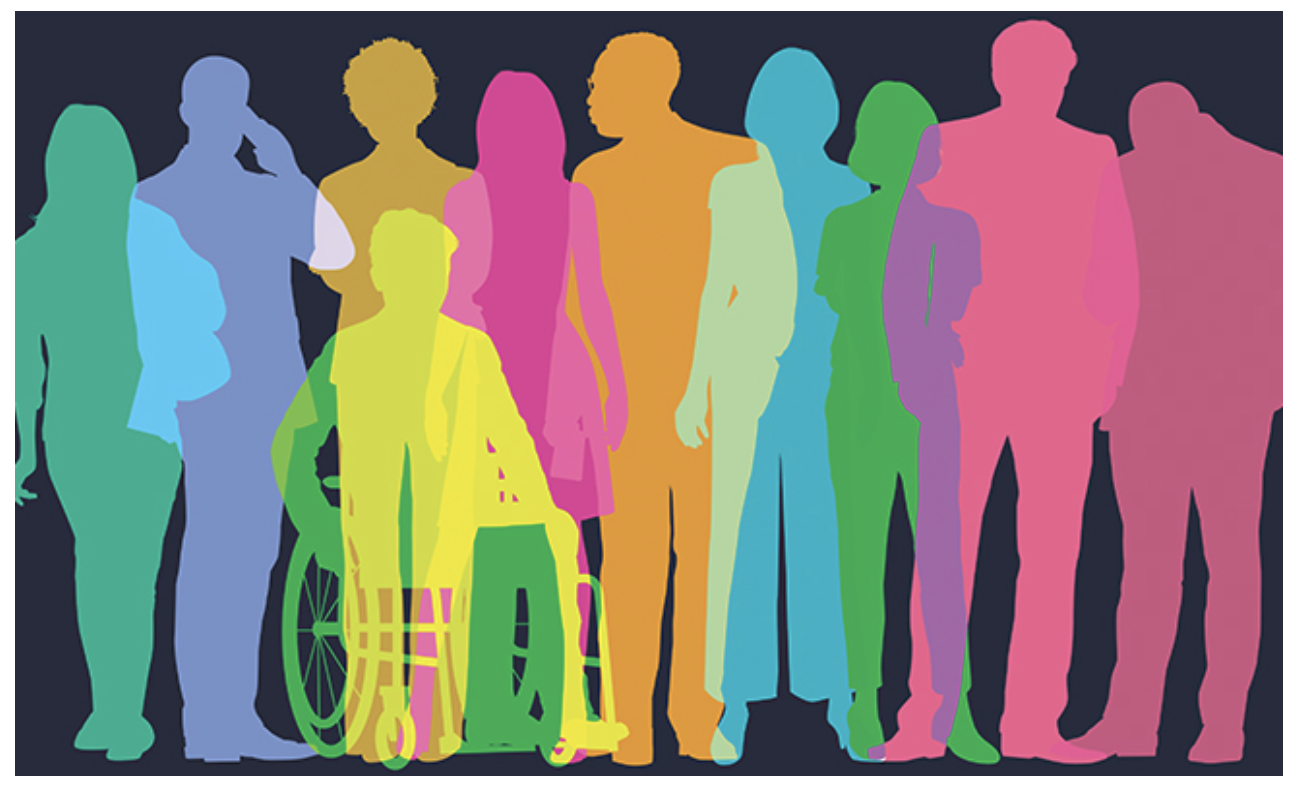
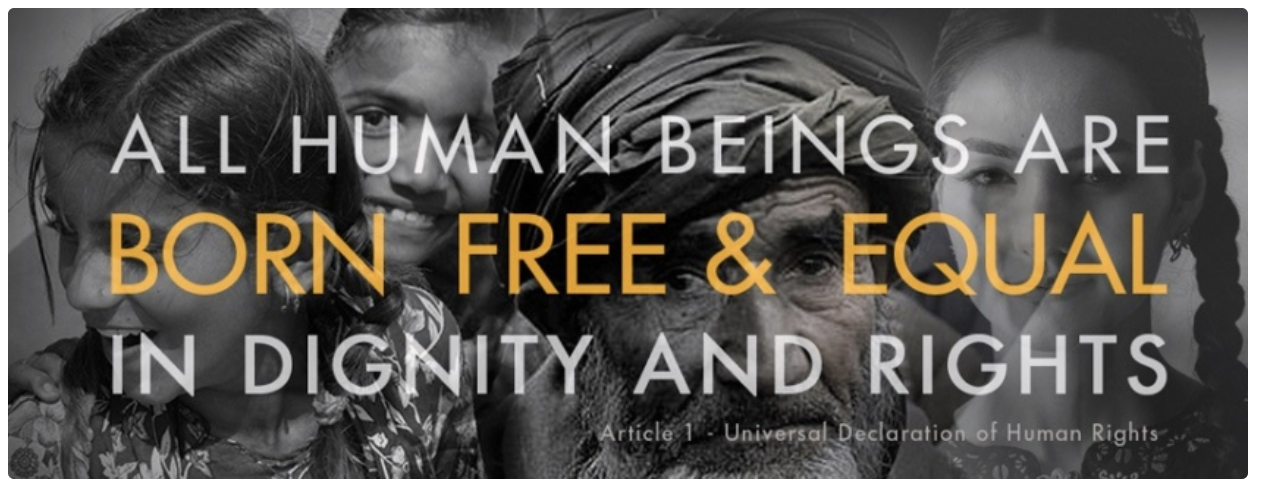
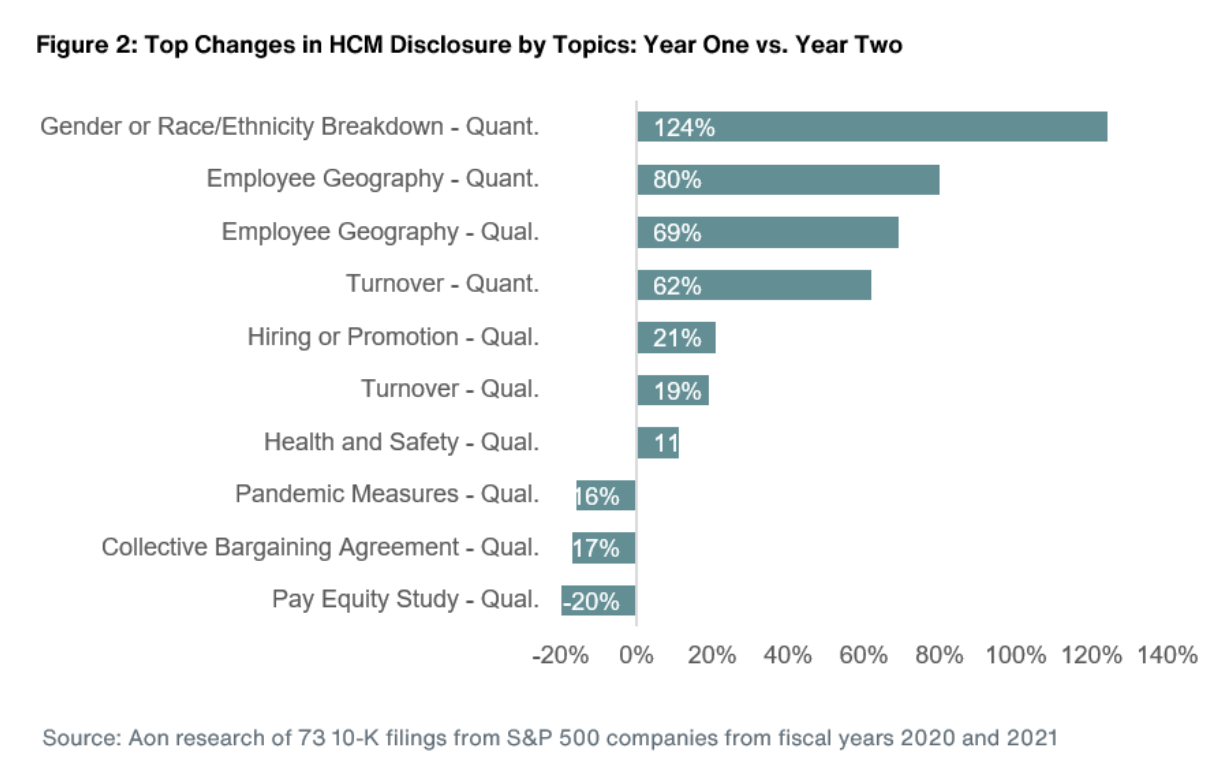
Since the Beginning of Time -- History of LGBTQIA Individuals and Difference to Humanity
Timeline of LGBTQIA History:
20,000 BCE: “The Dancers,” possibly 20 found in the Cave of Gönnersdorf, Germany (LGBTQIA)
https://wtfarthistory.com/post/14618191022/paleolithic-homos-come-out-of-the-cave
https://donsmaps.com/gonnersdorf.html
9,600 and 5,000 BCE. - The oldest depictions of homosexuality images are the Grotta dell’Addaura (or the Addaura Cave) in Sicily.
https://worldqueerstory.org/2017/06/02/cave-paintings/
AFRICA - LGBTQIA IN ANCIENT WORLD:
2,400 BCE. -- EGYPT: Khnumhotep and Niankhkhnum to be the first recorded same-sex couple in ancient history bury them together in one and the same mastaba tomb. https://en.wikipedia.org/wiki/Khnumhotep_and_Niankhkhnum
History’s First Gay Couple - They lived, died and were buried together as early as 2400 B.C in Egypt
https://medium.com/lessons-from-history/historys-first-gay-couple-f877be3a5b86
2,400 BC - ABC Good Morning America: Scholars Believe Oldest Gay Couple in History:
History of lesbianism:
https://en.wikipedia.org/wiki/History_of_lesbianism
_____________________
LGBTQIA in Africa/ History:
https://en.wikipedia.org/wiki/LGBT_rights_in_Africa
LGBTQIA History in India:
https://en.wikipedia.org/wiki/LGBT_history_in_India
LGBTQIA History in China:
https://en.wikipedia.org/wiki/Homosexuality_in_China
LGBTQIA in Russia:
https://en.wikipedia.org/wiki/LGBT_history_in_Russia
LGBTQIA in Mexico:
https://en.wikipedia.org/wiki/LGBT_history_in_Mexico
LGBTQIA in Canada:
AMERICAS: Indigenous People – Two-spirit Native Americans (LGBTQIA) History and Relevance:
5 GENDERS: THE STORY OF THE NATIVE AMERICAN TWO-SPIRITS
https://www.the-numinous.com/2016/07/06/native-american-two-spirits/
Duane Brayboy: Outsiders tried to wipe out Native gender identity
https://www.indianz.com/News/2016/01/25/duane-brayboy-outsiders-tried.asp
Two-Spirit People: Sex, Gender & Sexuality in Historic and Contemporary Native America
https://www.ncai.org/policy-research-center/initiatives/Pruden-Edmo_TwoSpiritPeople.pdf
Two Spirits - Third and Fourth Genders in Native America
https://www.willsworld.org/twospiritslide/slide-04.html
The Zuni Man-Woman - We'wha and the Zuni Third Gender Role
https://www.willsworld.org/zunibook/zunibook.html
Indigenous Peoples’ Day: Two-spirit Native Americans bridge genders
https://qspirit.net/indigenous-peoples-day/
Native American Two Spirits at National Historic Sites
https://www.willsworld.org/Roscoe-2SpiritAtNationalHistoricSites.pdf
LGBTQ America: A Theme Study of Lesbian, Gay, Bisexual, Transgender, and Queer History http://npshistory.com/publications/nhl/theme-studies/lgbtq-america.pdf
LGBTQ Rights Timeline in American History:
https://www.lgbtqhistory.org/lgbt-rights-timeline-in-american-history/
Milestones in the American Gay Rights Movement:
https://www.redbookmag.com/life/g21288608/famous-gay-lgbtq-people-in-history/
https://www.english-heritage.org.uk/learn/histories/lgbtq-history/

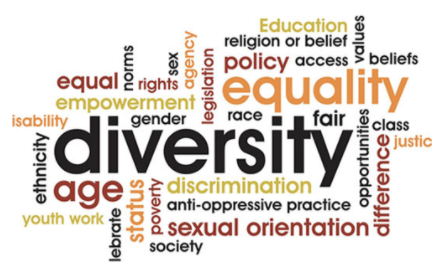
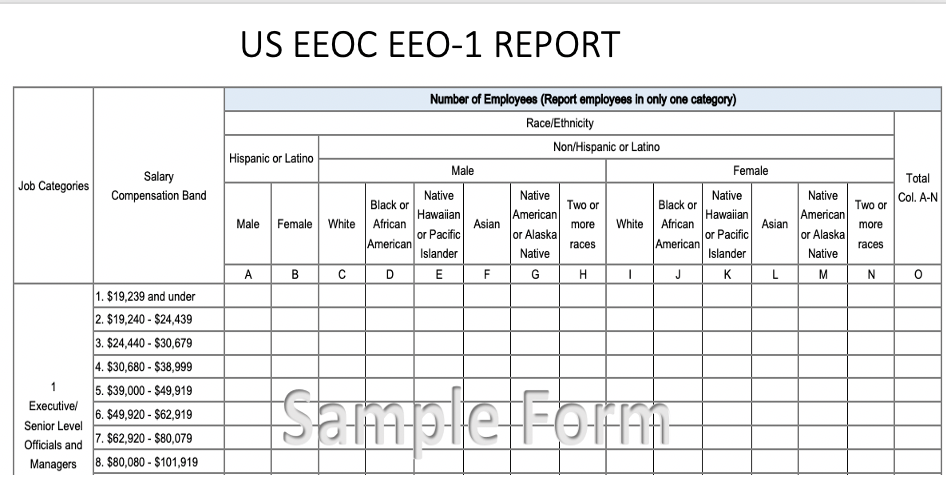
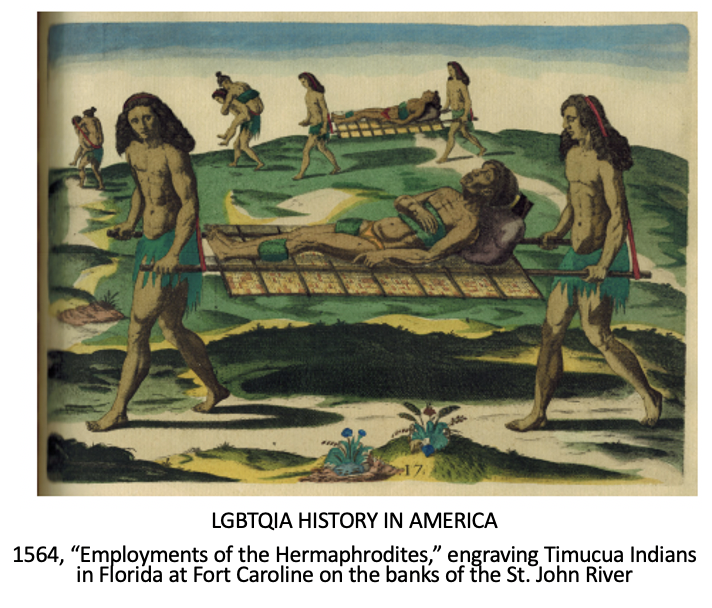

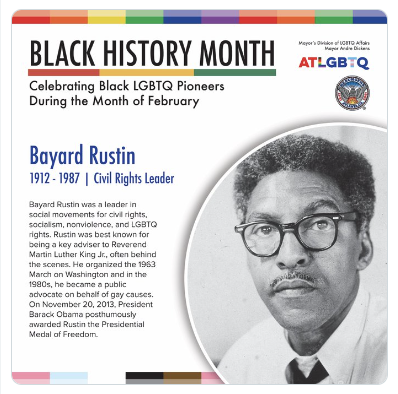
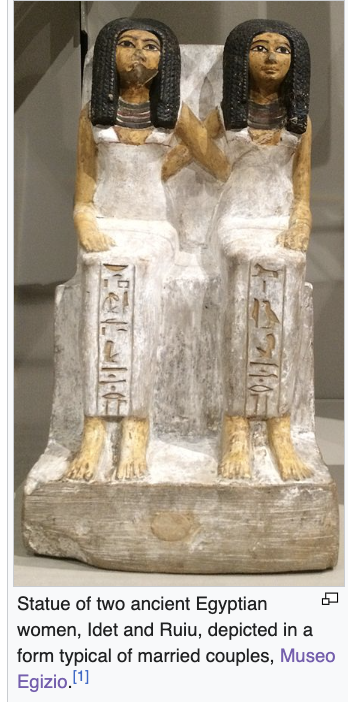
#humancapital #iso #humanresources #hr #education #women #awareness #community #advocacy #liveabundantly #un #idahot #cnn #humancapitalmanagement #humandevelopment #loveislove #leadership #infotraining #theglobalgoals #unsdg #riskmanagement #supplychain #pipeline #engineering #leanmanufacturing #recruitment #vendorevaluation #nasdaq #management #training #hrmanagement #unitednations #esg #oprah #fordfoundation #obamafoundation #business #gatesfoundation #globalgoals #hrconsulting #work #training #naacp #taxes #business #marketing #mediarelations #education #college #job #startup #coaching #workfromhome #talent #leadership #covid #human #development #communication #iss #pr #hrd #reputation #sap #brand #ibm #management #iso #issb #aflcio #curriculum #eeo1 #faircredit #accounting #audit #internalaudit #employeeengagement #diversestakeholders #workforce #mentors #allys #facilitation #hrtechnology #equality #love #diversityandinclusion #safeculture #community #equity #diversitymatters #leadership #eu #blacklivesmatter #blm #pride #africanamerican #chamber #education #art #lgbtq #transparency #disclosures #accountability #unity #lgbtqia #ukraine #representationmatters #inclusionmatters #disability #loveislove #fashion #covid #intuit #gay #peace #veterans #womenempowerment #photography #humanrights #civilrights #inspiration #highschool #inclusivity #calpers #tiaa #empowerment #cybersecurity #trans #disabilityawareness #fairhousing #mentalhealth #motivation #feminism #genderequality #family #nature #beauty #pcaob #change #justice #business #ceo #cfo #board #director #antiracism #pcaob #racism #instagood #socialjustice #repost #toneatthetop #womeninbusiness #music #acceptance #alliance #capitalmarkets #entrepreneur #businessowner #womensupportingwomen #highschool #linkedin #trans #diversity #gay #business #entrepreneur #loveislove #culture #pride #mentalhealth #usdoj #nsf #community #blacklivesmatter #education #respect #change #lgbtq # #womeninbusiness #leadership #queer #diversity #equality #empowerment #blm #feminist #unity #genderpay #companyculture #justice #usdolwb #humanrights #acceptance #racism #inclusion #gender #disability #taxpayer #genderequality #intersectionality #socialjustice #representationmatters #diversity #orlando #impactinvesting #equity #disabilityawareness #antiracism #inclusive #diversityandinclusion #diversitymatters #diversityinlaw #inclusionmatters #nato #inclusivity #diversityisbeautiful #diversityinfashion #diversityinclusion #diversityinbooks #diversityinstem #diversityisourstrength #diversityinadventure #diversityrules #diversityinmedicine #youth #lgbtqiayouth #trevorproject #gmhc #hrc #nglcc #glaad #lgbtqcenter #usdol #potus #whitehouse #eeoc #ushhs #ushud #federalreserve #fdic #fhlb
About Us
CEO/Owner, Colcomgroup, Inc. Consultant > Strategic Planning, Business Development, Government Affairs, Marketing, PR, Media Relations, Social Media and Writing
Contacts
David Colgren
CEO, Colcomgroup
dcolgren@colcomgroup.comPhone: 917-587-3708
https://www.linkedin.com/in/davidcolgren/Links